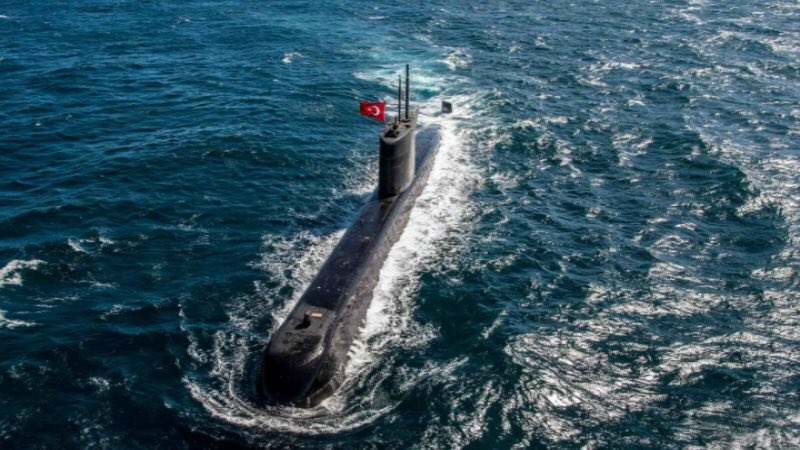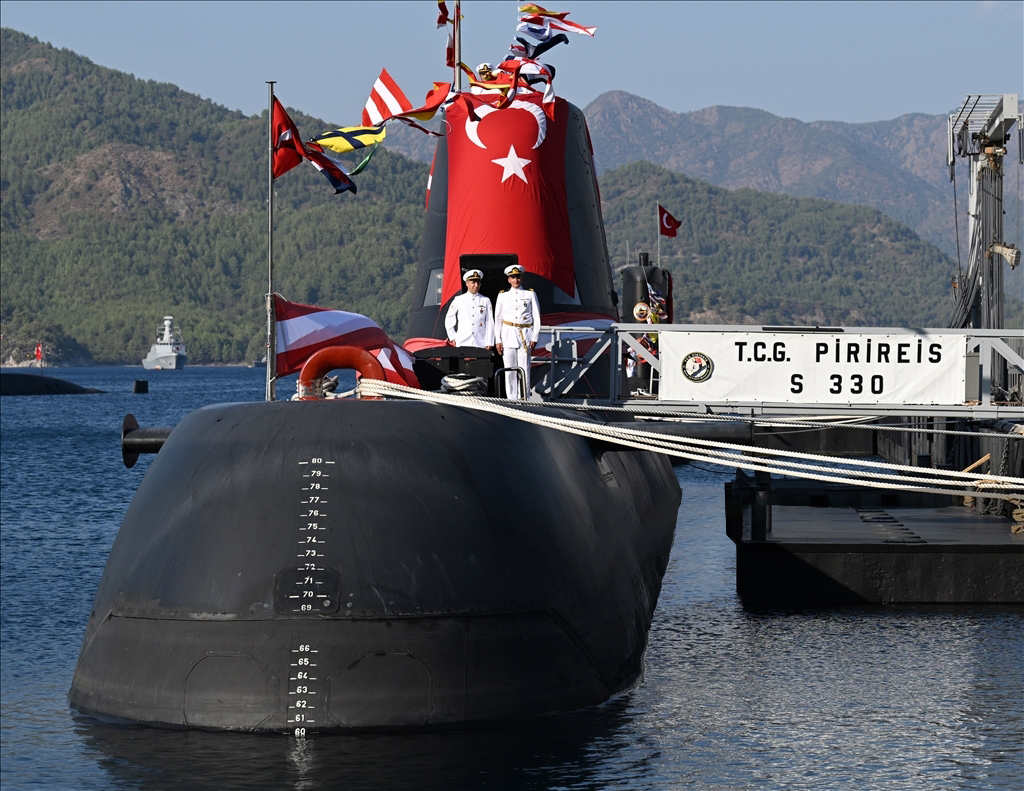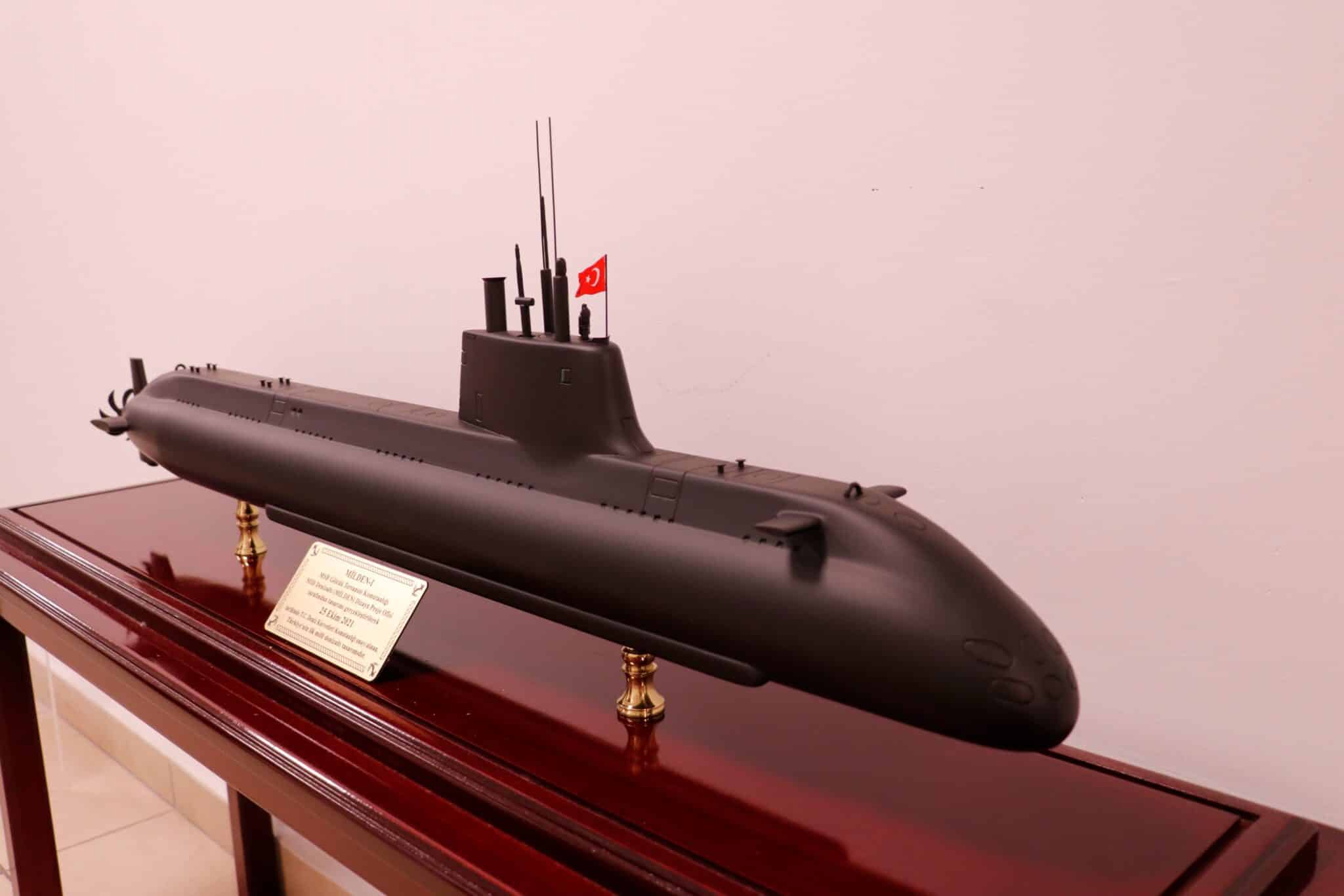Turkey Plots Nuclear-Powered Undersea Breakthrough: MILDEN Submarine Program Signals Bid for Maritime Supremacy
Turkish Naval Forces Commander Admiral Ercüment Tatlıoğlu revealed that the knowledge and expertise required to build nuclear-powered submarines would be cultivated under Turkey’s national submarine development program, known as MILDEN (Milli Denizaltı Projesi), which forms the cornerstone of the country’s naval modernization efforts.
(DEFENCE SECURITY ASIA) – In a bold declaration of strategic intent, the Turkish Navy has confirmed plans to acquire nuclear-powered submarines—a transformative capability that not only reinforces its long-term deterrence posture but also aligns with Ankara’s vision of becoming a consequential mid-tier power with global influence in a multipolar security environment.
Speaking in an exclusive interview with Warship International Fleet Review, Turkish Naval Forces Commander Admiral Ercüment Tatlıoğlu revealed that the knowledge and expertise required to build nuclear-powered submarines would be cultivated under Turkey’s national submarine development program, known as MILDEN (Milli Denizaltı Projesi), which forms the cornerstone of the country’s naval modernization efforts.
“Via this initiative, we will also take a crucial step towards constructing nuclear-powered submarines, essential for our long-term submarine deterrence capability and vision of being a mid-scale power with global influence,” Admiral Tatlıoğlu stated in the interviews.
Launched as part of Ankara’s bid to reduce foreign dependency in critical defence sectors, the MILDEN program represents a strategic leap in Turkey’s maritime doctrine, seeking to deliver its first fully indigenous attack submarines designed, engineered, and constructed entirely by domestic institutions and defence industry stakeholders.
The new class of submarines is designed around a diesel-electric propulsion architecture integrated with Air-Independent Propulsion (AIP) systems, a technology that dramatically extends underwater endurance and tactical discretion, allowing extended submerged operations without the need to surface—an advantage particularly vital in contested waters such as the Eastern Mediterranean and the Black Sea.
As Turkey faces a complex maritime security matrix—spanning territorial disputes in the Aegean with Greece, offshore energy competition in the Eastern Mediterranean, and increasing Russian assertiveness in the Black Sea—the strategic value of silent, long-endurance submarine platforms cannot be overstated.
Each MILDEN-class submarine is projected to be over 80 metres in length with a surface displacement of approximately 2,700 tonnes, placing it within the medium-sized attack submarine category yet engineered with endurance and lethality to challenge regional peers and complicate adversary anti-submarine warfare operations.

The AIP system, likely based on advanced fuel cell or Stirling engine designs inspired by Germany’s Type 214 technology—which Turkey is already co-producing—will enable weeks of submerged patrols, giving Turkish submarines a decisive advantage in evasion, surveillance, and surprise strike operations within NATO and contested regional maritime corridors.
In terms of firepower, the MILDEN-class will be outfitted with an integrated suite of homegrown naval weapons developed by Turkish defence giants such as Roketsan and TÜBİTAK-SAGE, showcasing the country’s growing ability to field advanced underwater warfare capabilities without reliance on Western suppliers.
The primary arsenal includes AKYA heavyweight torpedoes, designed for deep-sea engagements against enemy submarines and surface combatants; ATMACA anti-ship missiles, capable of standoff precision strikes on hostile vessels with sea-skimming trajectories; and the GEZGİN land-attack cruise missile, reportedly boasting a range of over 1,000 kilometres, allowing deep-strike capabilities against strategic land targets across the region.
This weapons suite positions the MILDEN-class as not just a hunter-killer submarine, but also a versatile platform for maritime interdiction and strategic land-attack roles, potentially offering Turkey second-strike options in the evolving missile doctrine of the 2030s.
The conceptual design phase of the submarine was completed in 2022 at the Gölcük Naval Shipyard, a facility that has become the nucleus of Turkey’s indigenous naval shipbuilding ambitions, leveraging lessons from its production of Type 214 submarines under the Reis-class program.

By September 2022, the project transitioned into the preliminary design stage, focusing on the integration of mission systems, propulsion technologies, combat management architecture, and command-and-control interfaces—components essential for underwater survivability and tactical flexibility.
On January 2, 2025, the Turkish Navy officially commenced construction of the first MILDEN submarine with a steel-cutting ceremony, marking a pivotal milestone in Ankara’s maritime force transformation and reinforcing its intent to reshape the naval balance in the surrounding seas over the coming decade.
The first MILDEN-class unit is expected to enter active duty in the early 2030s following extensive sea trials and combat system validation, just as Turkey’s regional maritime environment is likely to become even more complex with rising great power naval activity and rapid militarization of strategic chokepoints such as the Turkish Straits and the Suez approach.
President Recep Tayyip Erdoğan, a long-standing advocate for strategic autonomy, has also publicly questioned the global non-proliferation order, denouncing the double standards of major powers in remarks made in 2019 that hinted at Ankara’s frustration with international restrictions on nuclear capabilities.
“Some countries have missiles with nuclear warheads, not one or two. But (they tell us) we can’t have them. This, I cannot accept,” Erdoğan declared, underscoring a broader Turkish narrative that rejects asymmetric constraints on national defence development and signals an assertive pivot toward self-reliance in strategic technologies.
Though his comments were directed at nuclear warheads rather than propulsion systems, they reflect the broader strategic intent behind Turkey’s interest in nuclear-powered submarines: to establish a robust and survivable maritime deterrent that enhances national sovereignty and long-range force projection.


Turkey’s pursuit of this capability is further reinforced by its investment in civilian nuclear energy infrastructure, particularly the Akkuyu Nuclear Power Plant, a Russia-backed facility expected to come online by 2025, which is set to become a critical knowledge base for developing nuclear propulsion expertise within military-industrial circles.
Recent reports in Turkish defence media have also cited analysis by Lt. Colonel Deniz Aytan, a senior Turkish naval officer, who revealed that the Navy has conducted detailed evaluations of existing nuclear-powered submarine classes—most notably France’s Barracuda-class (Suffren-class) attack submarines, which are replacing the French Navy’s ageing Rubis-class.
The Barracuda-class, equipped with advanced acoustic silencing, pump-jet propulsion, and integrated strike capabilities, was reportedly selected for study due to its stealth characteristics and technological sophistication, making it one of the most formidable nuclear-powered attack submarines currently in production.
As of 2025, only six nations—namely the United States, Russia, China, France, the United Kingdom, and India—operate nuclear-powered submarines, with Australia set to join their ranks under the AUKUS pact, signalling a broadening of the club of nations with strategic undersea nuclear capability.

France currently fields eight nuclear-powered submarines, including four Triomphant-class SSBNs capable of launching ballistic missiles with nuclear warheads, and four Suffren-class SSNs focused on precision strike and sea denial missions, highlighting the level of capability Turkey aspires to replicate.
In this context, Turkey’s MILDEN project, and its broader ambition to field nuclear-powered submarines, represents more than a technological leap—it is a geopolitical signal of Ankara’s intent to become a decisive maritime power capable of operating autonomously across theatres, from the Eastern Mediterranean to the Indo-Pacific.
— DEFENCE SECURITY ASIA


